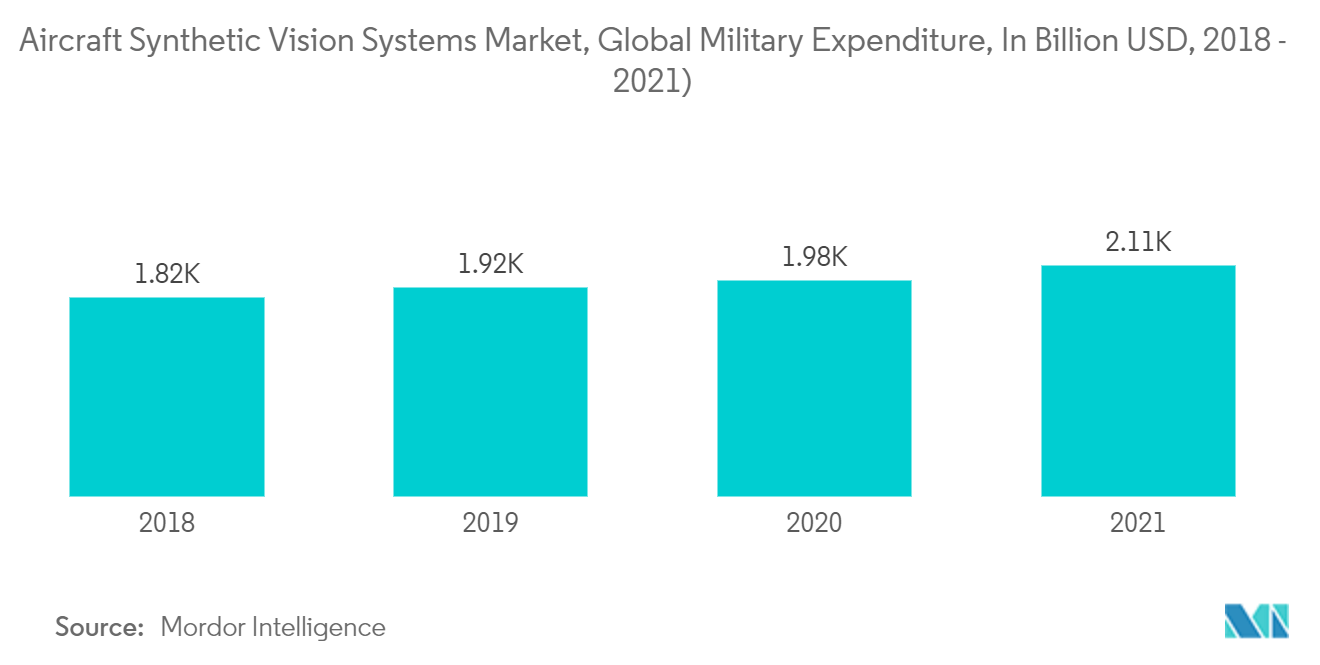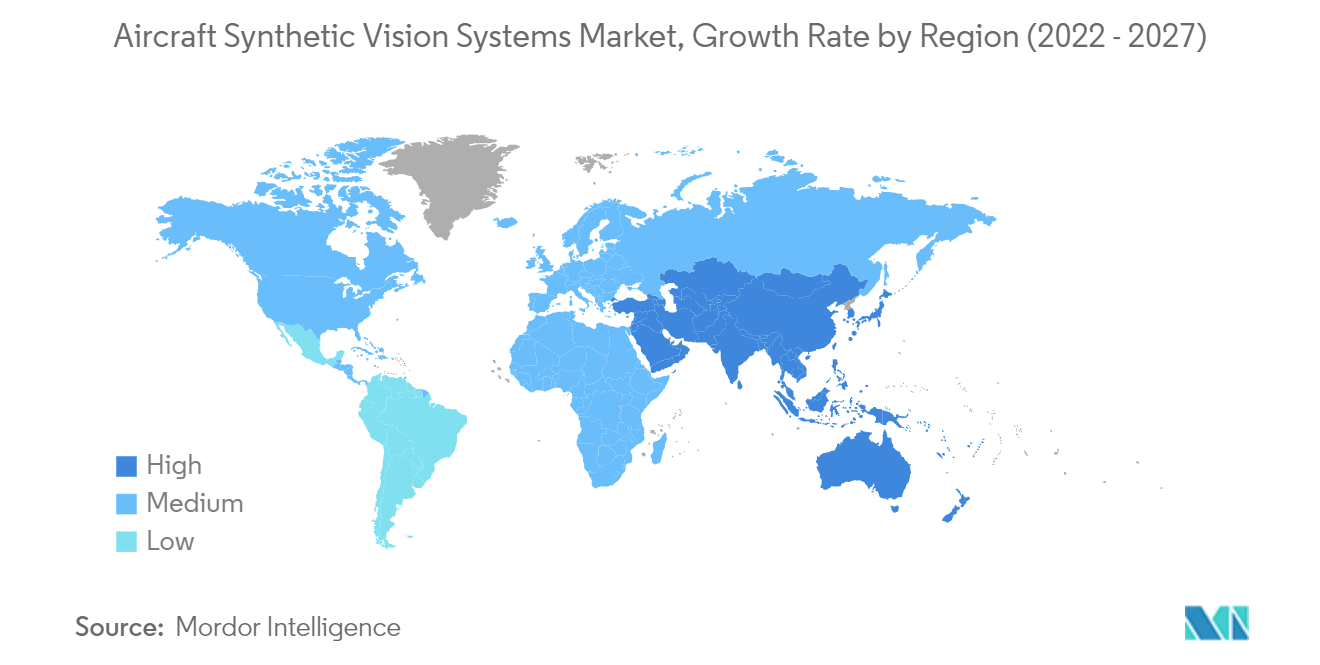Market Trends of Aircraft Synthetic Vision Systems Industry
This section covers the major market trends shaping the Aircraft Synthetic Vision Systems Market according to our research experts:
Military End-user to Witness Higher Growth During the Forecast Period
The emerging geopolitical rift among nations has fostered the need for the induction of advanced military assets, including aircraft. The subsequent increase in defense expenditure also aims to accelerate ongoing and new procurement programs for new-generation platforms. In 2021, the world military expenditure surpassed the two trillion US dollar mark for the first time, reaching USD 2,113 billion. Global spending in 2021 was 0.7% higher than in 2020 and 12% higher than in 2012.
Multiple prominent nations are procuring combat aircraft to strengthen their combat capabilities. For instance, in May 2021, the US Air Force awarded a USD 14 billion contract to Lockheed Martin Corporation to produce 128 Block 70/72 jets on behalf of Bahrain, Slovakia, Bulgaria, Taiwan, and Morocco. Similarly, in January 2021, the Indian Ministry of Defense (MoD) cleared the purchase of 83 LCA MK1A Tejas light combat aircraft for USD 6.5 billion. Also, in July 2021, the UK MoD signed a USD 347 million agreement with Team Tempest to provide digital and physical infrastructure to develop the aircraft. Other nations are undertaking similar procurement initiatives across the world. Since these new-generation military aircraft feature state-of-the-art synthetic vision systems that enable the pilot to have 360-degree situational awareness, the demand for new-generation military aircraft is expected to create a parallel demand for synthetic vision systems.

North America to Dominate the Market During the Forecast Period
The aerospace industry in the region is mature and strongly supported by a robust aviation base. Higher air traffic has resulted in the procurement of several aircraft by regional and international airline operators in the region. Boeing, one of the major aircraft OEMs based in the US, generates a huge demand for aircraft fire protection systems. As the OEMs receive new orders for aircraft, the demand is simultaneously generated for commercial aircraft fire protection systems, as FAA mandates the installation of evacuation systems in all active aircraft. Factors such as the availability of raw materials, political stability, and low production costs have driven the establishment of new aerospace manufacturing facilities in the region. Also, fluctuations in aviation fuel prices have triggered a surge in demand for fuel-efficient new-generation aircraft worldwide.
Hence, aircraft OEMs have started beefing up their production capabilities to cope with the ever-increasing demand. In September 2021, Airbus was developing a newly enhanced flight vision system (EFVS) for its A320 family of aircraft, which is expected to be adapted to other models eventually, and selections of a next-generation enhanced vision sensor to be supplied to Airbus by Collins Aerospace. The EFVS currently under development consists of the sensor, a multi-special camera system, head-up display (HUD), and cockpit controls, and eventually could be adapted to other Airbus aircraft models in addition to the A320.
Indigenous aircraft development programs are anticipated to bolster regional fire protection system manufacturers and integrators' business prospects. For instance, as part of its Air Superiority 2030 program, the US Air Force (USAF) is developing two new high-tech fighter aircraft, dubbed the Penetrating Counter Air. The USAF expects to ramp up funding to USD 1.4 billion in FY20 and USD 3.1 billion in 2022 for developing advanced air combat systems. Such investment and technological development are expected to boost the Aircraft Synthetic Vision Systems Market in the coming year.


